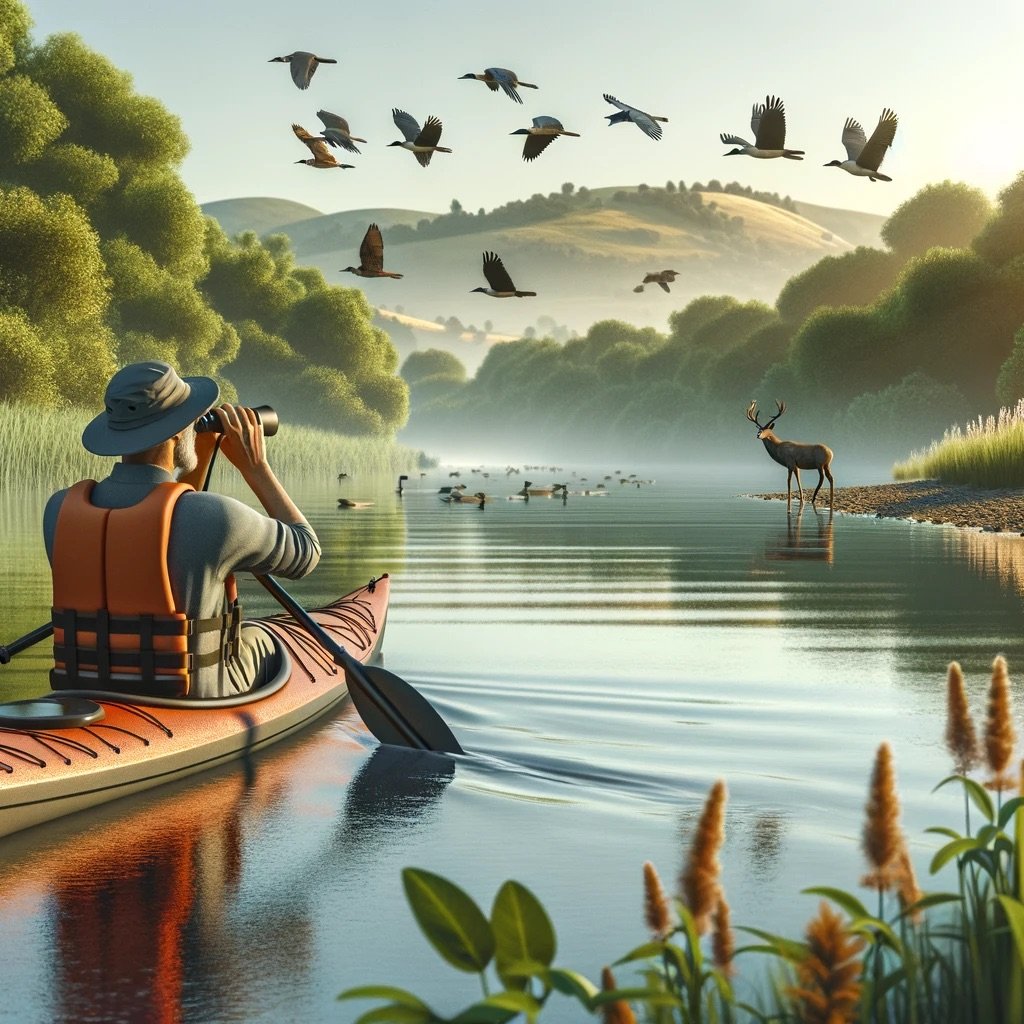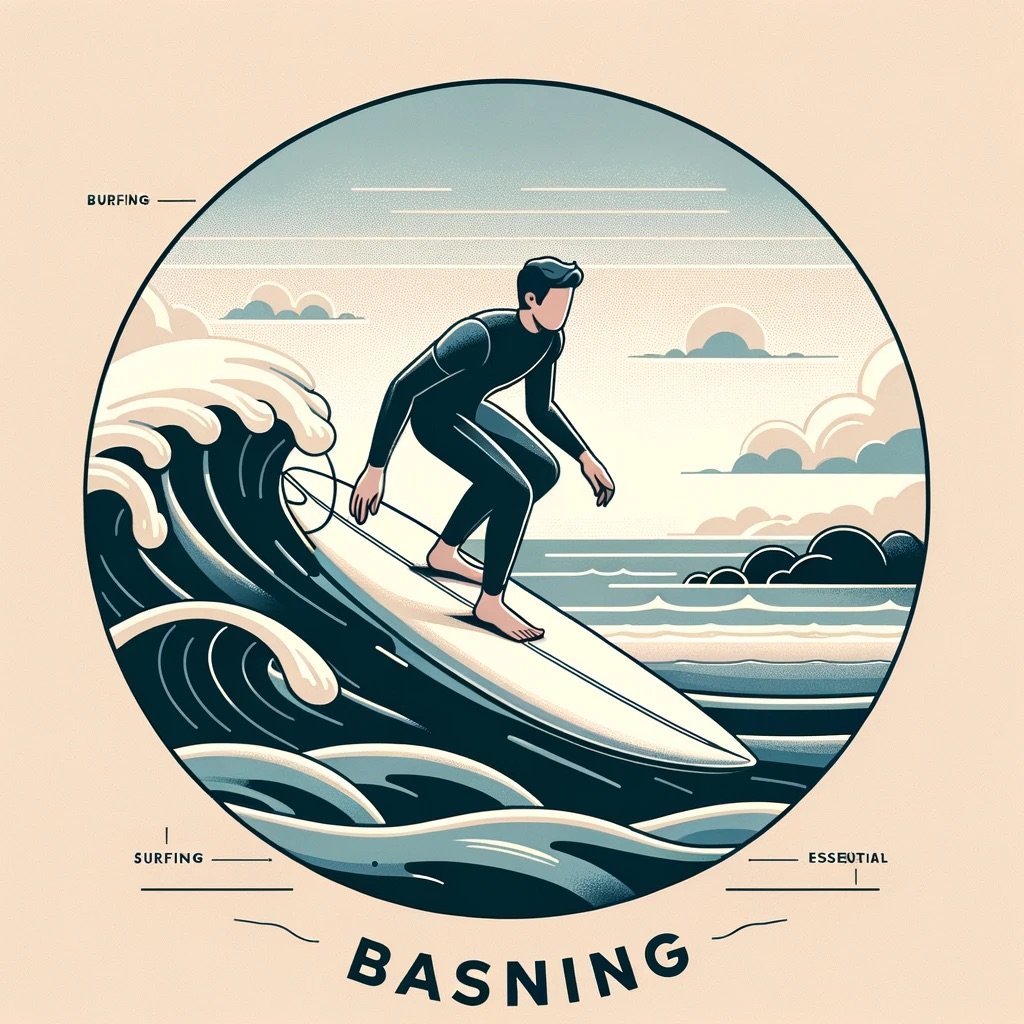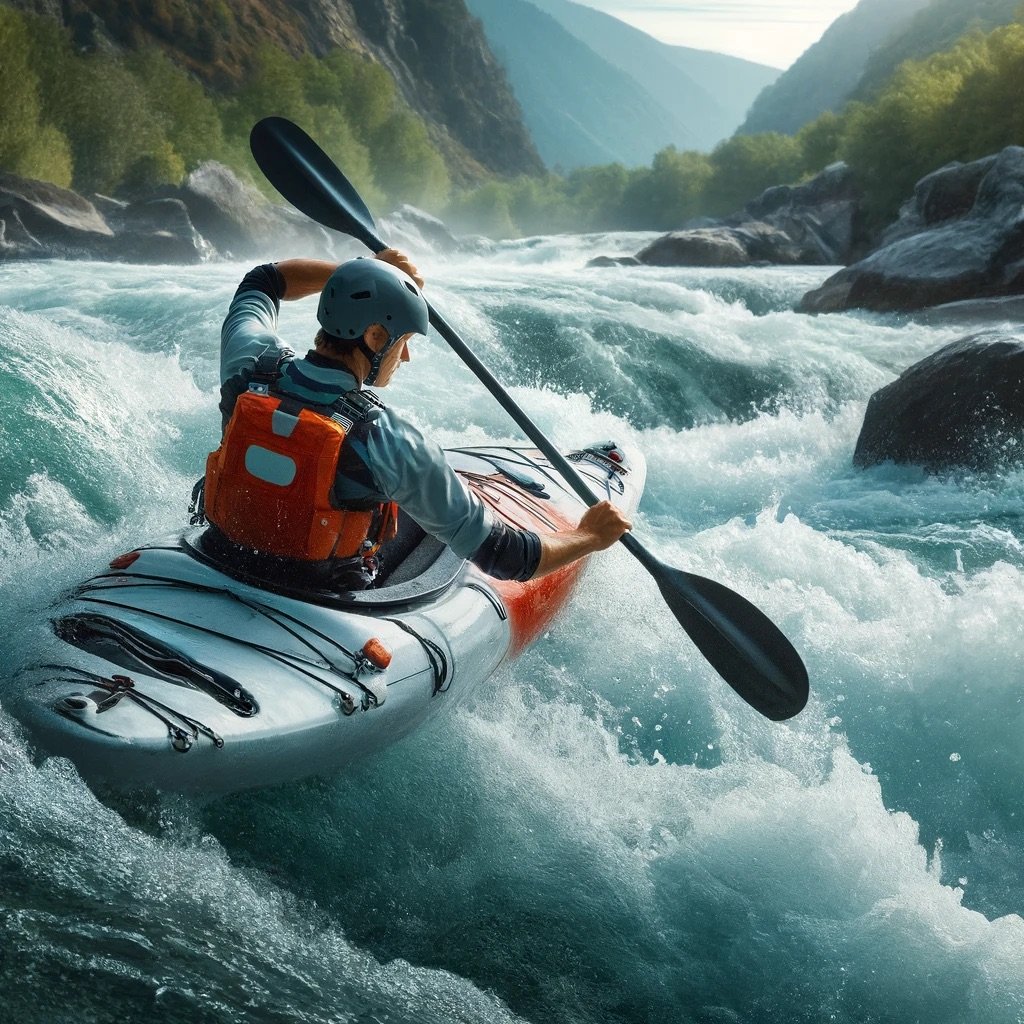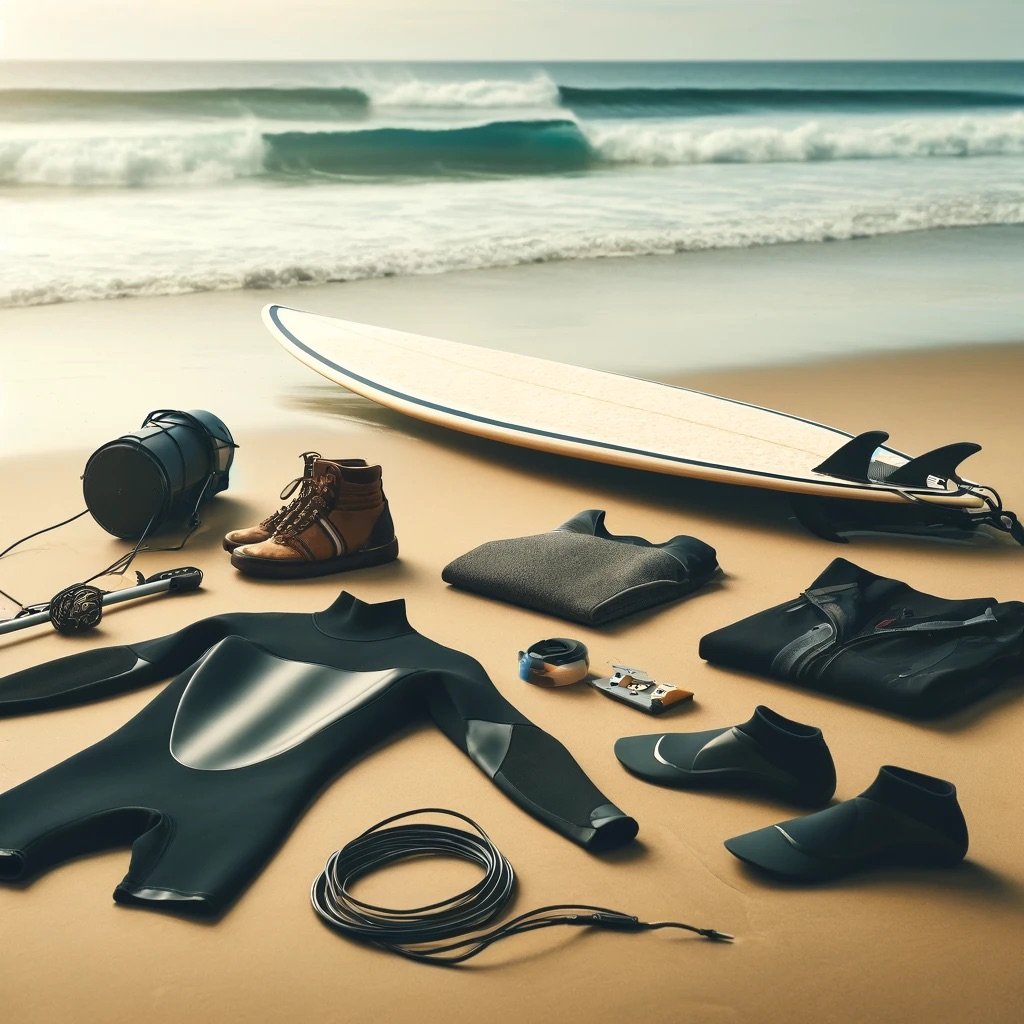Kayaking or canoeing provides a unique and intimate way to observe wildlife in their natural habitats. Here are some tips and techniques to enhance your wildlife watching experience while ensuring safety and respect for the animals.
Best Practices for Wildlife Watching
- Maintain a Safe Distance
- Keep a respectful distance from wildlife to avoid disturbing them. Use binoculars for a closer view without approaching too closely.
- Stay Quiet
- Move quietly and avoid sudden movements to prevent startling animals. Paddle gently and speak in low tones if necessary.
- Observe Natural Behavior
- Watch animals without interfering. Observing their natural behaviors provides a more authentic and rewarding experience.
- Do Not Feed Wildlife
- Feeding animals can disrupt their natural diet and behaviors, and can lead to dependency on humans.
Optimal Times and Locations
- Early Morning and Late Afternoon
- Wildlife is most active during these times, making them the best periods for observation.
- Calm Waters
- Choose calm, slow-moving waters such as lakes, ponds, and gentle rivers. These environments are ideal for spotting a variety of animals.
- Habitats
- Look for diverse habitats such as wetlands, marshes, and forested shorelines. These areas often support a rich array of wildlife.
Essential Gear for Wildlife Watching
- Binoculars
- High-quality binoculars allow you to observe animals from a distance without disturbing them.
- Camera
- Bring a camera with a good zoom lens to capture photos of wildlife. Ensure it is waterproof or stored in a waterproof case.
- Field Guide
- A field guide helps identify different species of birds, mammals, and plants. Consider downloading a wildlife identification app.
- Life Jacket
- Always wear a life jacket for safety while paddling and observing wildlife.
Techniques for Successful Wildlife Watching
- Paddle Efficiently
- Use smooth, quiet strokes to minimize noise and disturbance. Practice basic paddling techniques to maneuver quietly and efficiently.
- Be Patient
- Wildlife watching requires patience. Spend time in one area, allowing animals to become accustomed to your presence.
- Use Natural Cover
- Utilize natural cover like vegetation and shorelines to stay concealed while observing animals.
- Note the Wind Direction
- Approach animals from downwind to avoid your scent being carried towards them, which can alert and scare them away.
Respecting the Environment
- Leave No Trace
- Follow the Leave No Trace principles by packing out all trash, avoiding damage to vegetation, and respecting wildlife habitats.
- Stay on Designated Paths
- Stick to marked trails and waterways to minimize your impact on the environment.
- Report Sightings
- Share your wildlife sightings with local wildlife organizations or conservation groups to contribute to research and conservation efforts.
Conclusion
Wildlife watching from a kayak or canoe offers a serene and rewarding way to connect with nature. By following best practices, using the right gear, and respecting the environment, you can enjoy a safe and fulfilling wildlife observation experience. Embrace the tranquility of the water and the beauty of the natural world from your kayak or canoe. Happy paddling and wildlife watching!










